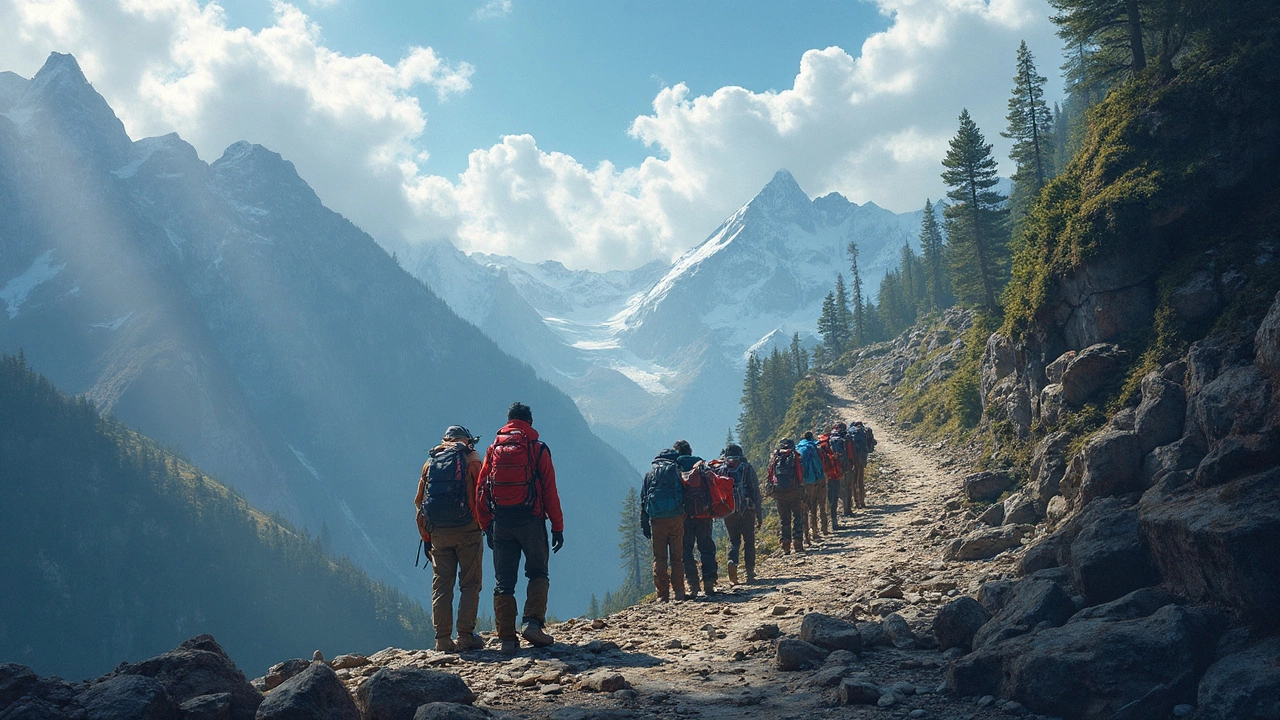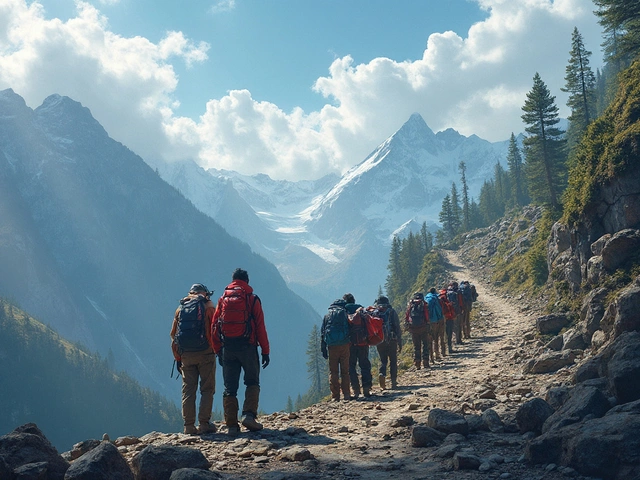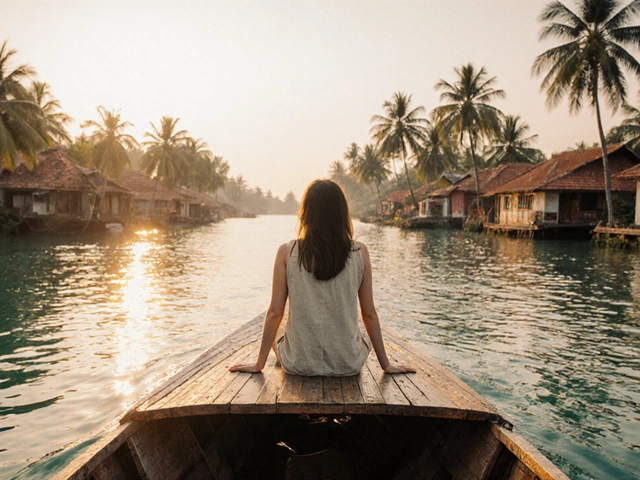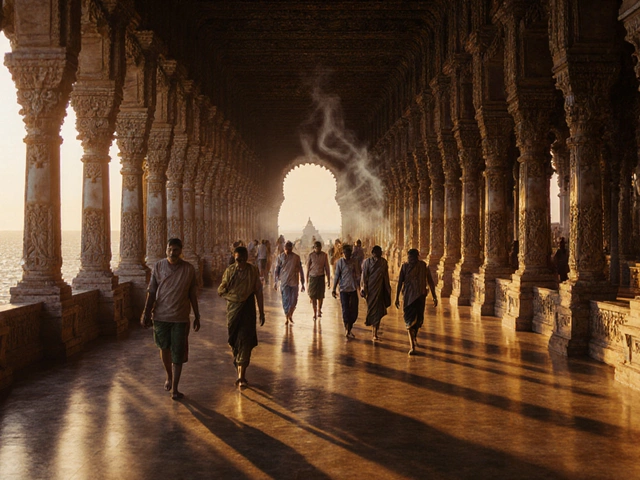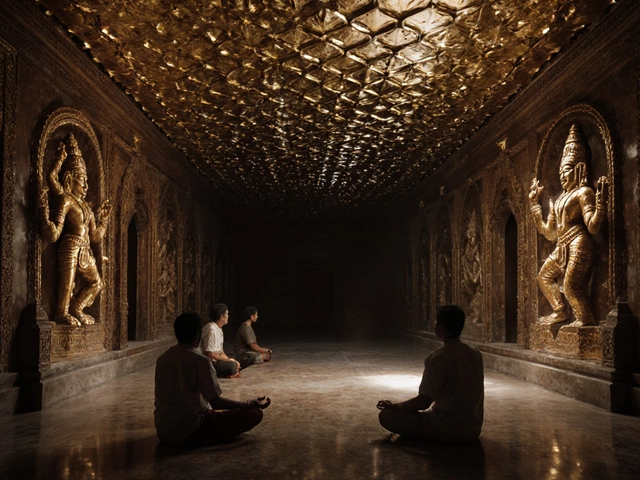When it comes to hardcore trekking in India, the Stok Kangri trek in the Indian Himalayas is often at the top of the list. Reaching an altitude of 20,187 feet, it's not just about the beautiful views; it's the sheer challenge that draws adventurers. This trek demands physical and mental stamina, making it a true test for even seasoned trekkers.
Before starting this trek, acclimatization is absolutely crucial. The air gets thinner the higher you climb, and altitude sickness is no joke. Make sure you're in good physical condition and take time to get used to the environment before taking on the steeper sections.
- Identifying the Toughest Trek
- Journey Through the Himalayas
- Must-Know Facts for Trekkers
- Essential Gear and Preparations
- Trekker Experiences and Stories
Identifying the Toughest Trek
The title of the toughest trek in India is subject to some debate among trekking enthusiasts, but one name that consistently pops up is the Chadar Trek. Found in the Zanskar region of Ladakh, this trek is unique because it takes place on a frozen river. Yup, you heard that right—you're literally walking on ice!
Chadar Trek is not just challenging because of its setting; it's the harsh weather conditions that make it one of the most difficult. With temperatures plummeting as low as -30°C, trekkers need to be exceptionally well-prepared. And let's not forget about the unpredictable weather; snowstorms can hit with little warning.
To give you a better idea, here's a quick overview:
- Trekking Duration: 9 to 10 days
- Best Time to Trek: January to February
- Max Altitude: Approximately 11,123 feet
| Difficulty Level | Temperature Range | Distance |
|---|---|---|
| Extremely High | -30°C to -10°C | 62 km |
Due to the harsh conditions, only those in peak physical condition should attempt it. But if you're up for an extreme adventure, the Indian Himalayas offer no better proving ground for your trekking skills. Just remember to always have a solid backup plan, and don't go without guides who know the terrain.
By now, you're probably realizing that this is not your typical trek. It demands high stamina, mental grit, and meticulous planning. But for those who conquer it, the sense of achievement is indescribable. So, do you think you've got what it takes to tackle one of the most challenging treks in India?
Journey Through the Himalayas
The journey through the Indian Himalayas, especially on the toughest trek India has to offer, is as much about the adventure as it is about the majestic landscapes. The Stok Kangri trek, positioned in the stunning region of Ladakh, offers a unique blend of raw nature and cultural richness.
As you progress through this challenging trek, you're not just climbing a mountain—you're entering a realm where snow-capped peaks dominate, and silence speaks volumes. This area isn't called the 'Land of High Passes' for nothing. The thrill of crossing icy streams and negotiating steep moraines is what keeps trekkers coming back.
Highlights of the Trek
- Stok Village: The adventure begins at this quaint village, a perfect entry into Ladakhi culture with its traditional houses and monasteries.
- Mankorma Campsite: Midway through the trek, this stunning campsite offers trekkers well-needed rest while surrounded by surreal beauty.
- Base Camp: Located at 16,300 feet, this site is where the real thrill begins, with night skies sparkling above like tales of old constellations.
Expect temperatures to drop significantly after sunset, so packing layers is vital. Avalanches, crevasses, and unpredictable weather make planning imperative. Always hire an experienced guide who knows the intricacies of mountain weather and trail conditions.
Stats and Facts
| Section | Distance (km) | Elevation Gain (m) |
|---|---|---|
| Stok Village to Camp 1 | 10 | 1,150 |
| Camp 1 to Base Camp | 6 | 1,200 |
| Base Camp to Summit | 8 | 1,500 |
Proper acclimatization increases the chances of a successful summit, as the trek is not just physically demanding but also mentally challenging. Embracing each step is like letting the Indian Himalayas reveal their story to you gradually—it’s a once-in-a-lifetime experience that changes perspectives.
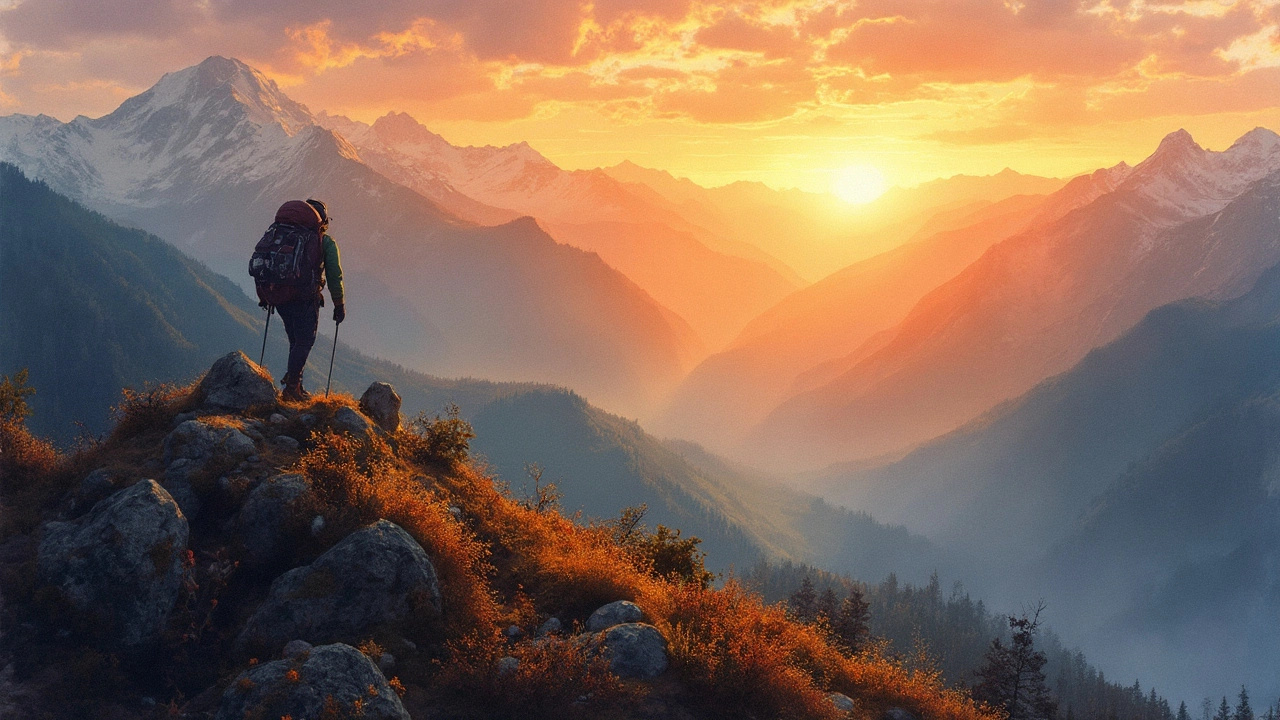
Must-Know Facts for Trekkers
Anyone looking to tackle the toughest trek in India should be armed with some critical information to ensure a safe and successful journey. Here are some facts that every trekker needs to know before stepping foot on these challenging trails.
Weather and Timing
The weather can be unpredictable in the Indian Himalayas. The best time to embark on the challenging treks is between June and September when the conditions are relatively stable. However, always check the forecast before setting out.
Acclimatization is Key
This cannot be stressed enough: give your body time to adjust to the high altitudes. Lack of proper acclimatization is a common reason people face difficulties during this trek. Plan one or two days of rest at Leh before heading to the higher camps.
Physical Preparation
Fitness is crucial for conquering such a challenging trek. Regular cardio, strength training, and flexibility exercises are recommended at least three months in advance.
The Stok Kangri climb is not just about physical fitness; mental preparation is equally vital. As Edmund Hillary famously said, 'It is not the mountain we conquer, but ourselves.'
Essential Gear Checklist
- High-quality trekking boots
- Layered clothing suited for extreme temperatures
- Sleeping bags designed for sub-zero temperatures
- First aid kit with altitude sickness medication
- Water purification tablets or filters
Guides and Permits
Hiring an experienced guide is invaluable for navigation and safety on these trekking India paths. Ensure you have all necessary permits, which are required for trekking in certain regions.
| Average Duration | Challenge Level |
|---|---|
| 8-14 days | Advanced |
With these must-know facts, you're not just ready to face India's toughest trek but to enjoy every bit of the adventure it offers.
Essential Gear and Preparations
Taking on the toughest trek in India isn't just about having the willpower; you need the right gear and solid preparations. Whether you're a seasoned trekker or a newbie, having the essentials is crucial to safely and comfortably complete the trek.
Packing the Right Gear
- Clothing: Layering is key. Start with moisture-wicking base layers, add thermal layers for warmth, and top it off with a water-resistant jacket. Don't forget thermal socks and good gloves!
- Footwear: Invest in sturdy, waterproof trekking boots with good ankle support. Breaking them in before your trek is a must to avoid blisters on the trail.
- Backpack: A durable 50-60L backpack should suffice. Make sure it has a comfortable hip belt and padded shoulder straps to distribute weight evenly.
- Accessories: Polarized sunglasses, a broad-brimmed hat, and sunscreen are non-negotiables. The sun's UV rays are intense at higher altitudes.
- Navigation: Carry a physical map and compass, despite having GPS. Technology can fail; old school methods are a reliable backup.
Preparations
Training and acclimatization are essential. Start a workout regimen focusing on cardio and strength weeks before you set off. Think stair-climbing, hiking, and leg workouts. Get used to carrying your pack during these sessions for real-world practice.
Permit and Assistance
Ensure you have the necessary permits before heading out. Some treks in the Indian Himalayas require these, along with a local guide or porter – who know the routes and can share invaluable advice.
Pre-plan your meals and snacks. High-altitude trekking burns loads of calories, so pack energy-dense foods like nuts, energy bars, and instant noodles that are easy to prepare.
Stay Informed
Weather can turn at the drop of a hat in these regions. Keep an eye on forecasts and be flexible with your itinerary.
Here's a little trivia: During peak seasons, trekkers usually follow around 25-30 minutes of hiking, followed by a 5-minute rest. This ensures stamina conservation and gives you time to adjust to any elevation changes.
By covering all these bases, you'll be in a much better position to safely experience the thrill of one of the most challenging treks India has to offer.
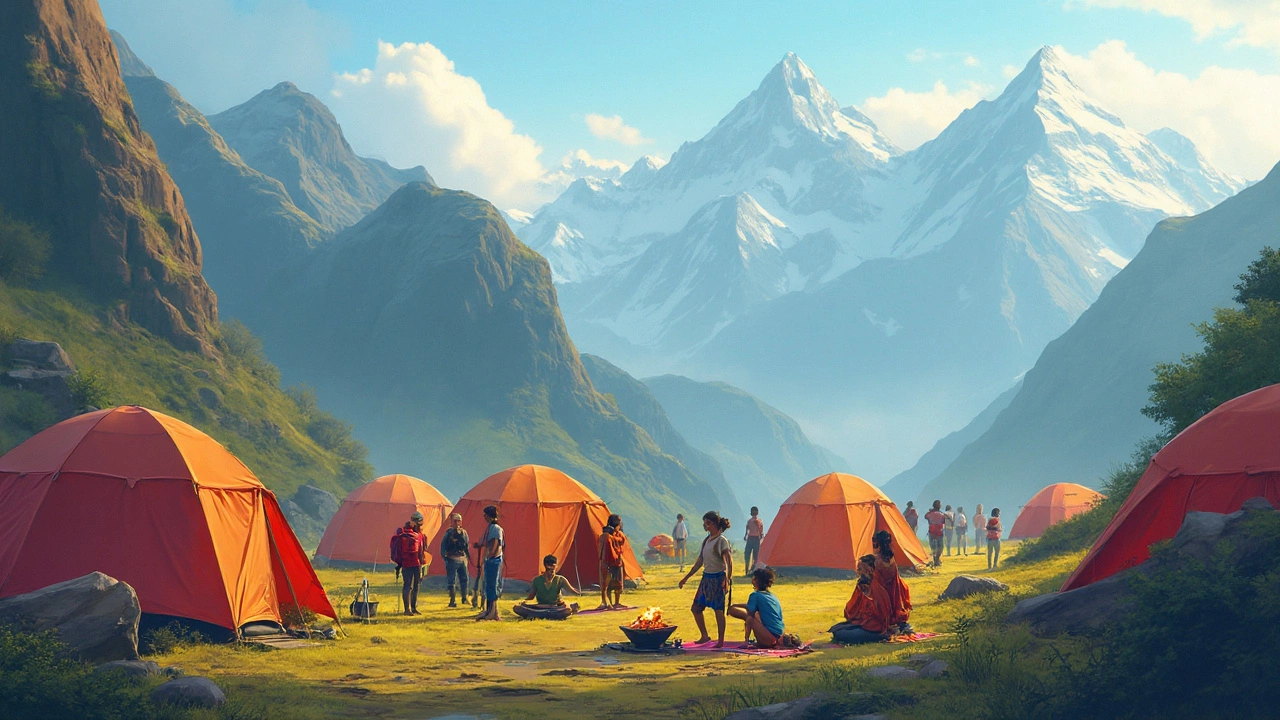
Trekker Experiences and Stories
The Stok Kangri trek is a magnet for thrill-seekers, and there are countless tales from those who have made it to the summit. Take the story of Sarah, who traveled all the way from Australia. She described her experience as life-changing, saying that the thin air and awesome views made every challenging step worthwhile.
Tales of Endurance
One of the most common themes in these stories is the sheer endurance required. Many trekkers underestimate how physically demanding it can be. John, an avid mountain enthusiast, shared his journey of battling altitude sickness but pushing through with determination. His story is a reminder that mental toughness is just as important as any gear you bring.
Guides: The Unsung Heroes
No trekker story is complete without a nod to the local guides. These experts are the real backbone, ensuring safety and offering local insights. They often share fascinating tidbits about the region, making the trek much more than a physical journey.
Unexpected Friendships
Another surprising aspect is the friendships forged along the trek. People from all around the world with a common goal create bonds over shared meals and late-night conversations. It's not just about reaching the top, but sharing the experience with others that makes these tales special.
There's this humorous story often told about a group who, after a tiring day of trekking, ended up camping in what seemed like a tough spot. They woke up to find they'd camped near a herd of curious yaks, a memorable surprise that added laughter to their journey.
Stats and Success Rates
Aspiring trekkers are often curious about success rates. According to recent data, roughly 70% of those attempting the Stok Kangri trek summit it successfully, most of whom have adequately acclimatized beforehand. The statistics underscore the importance of preparation.
| Attempt Year | Success Rate (%) |
|---|---|
| 2022 | 68% |
| 2023 | 70% |
These stories and stats not only highlight the trek's challenges but confirm that with the right mindset and preparation, reaching Stok Kangri is an achievable and rewarding feat.
